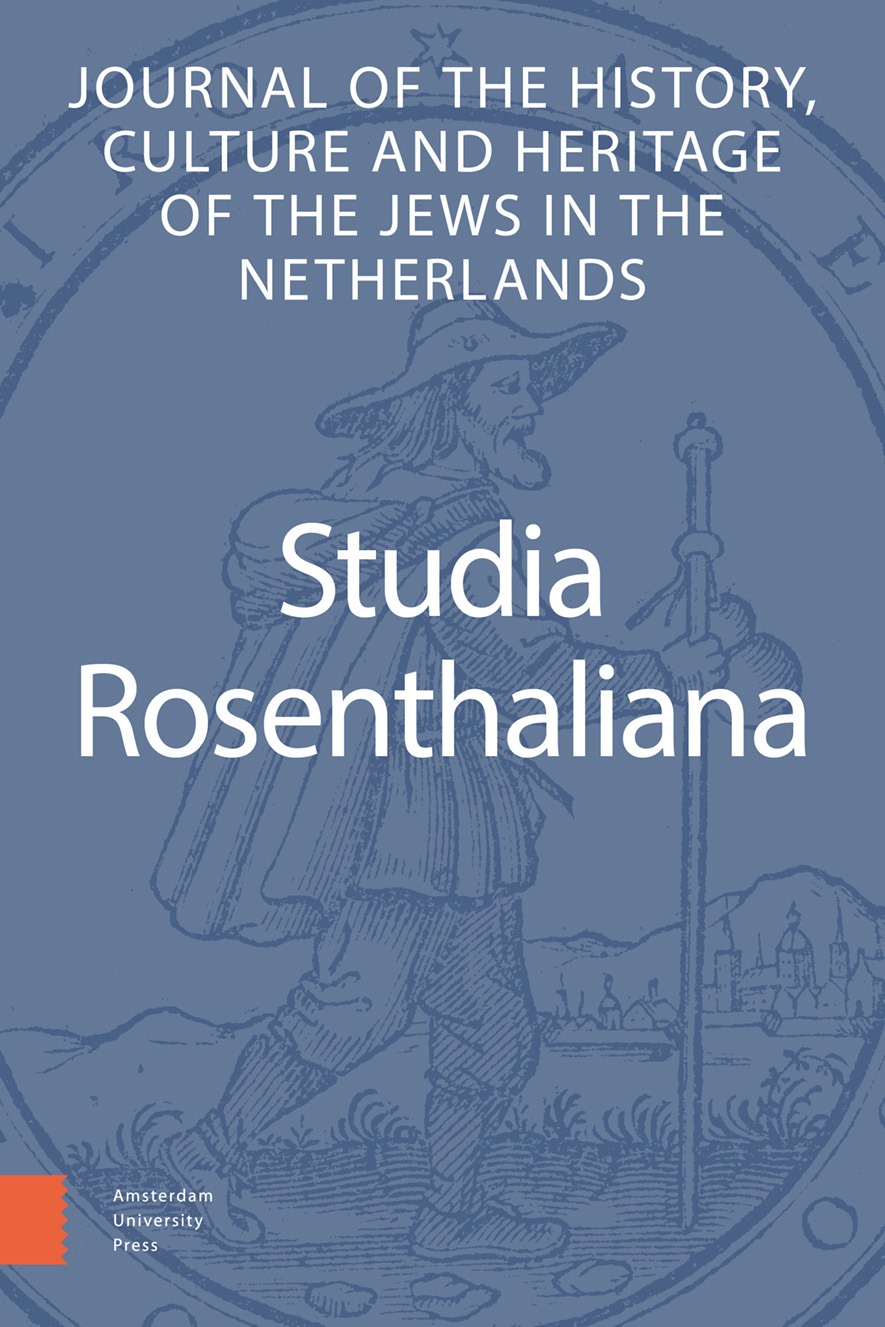- Home
- A-Z Publications
- Studia Rosenthaliana
- Previous Issues
- Volume 49, Issue 2, 2023
Studia Rosenthaliana - Volume 49, Issue 2, 2023
Volume 49, Issue 2, 2023
- Articles
-
-
-
Jews in Twelfth-Century ’s-Hertogenbosch and the Jewish Cemetery in Vught
More LessAuthor: Lauran TooriansAbstractA few late medieval chronicles and early modern histories about the Dutch city of ’s-Hertogenbosch (in Noord-Brabant province) mention the killing and burning of a large group of Jews in the time just before or around the foundation of the city towards the end of the twelfth century. All sources state that the burning took place at the Vughtherheide (Vught Heath), where the Jewish cemetery is. This cemetery still exists and can be proven to be old, but whether it dates back to around 1200 is unclear and depends on the credibility of the chroniclers. The aim of this article is to analyse the relevant statements in the chronicles, to discuss the pros and contras of their credibility and to try to give a context for their place within the chronicles.
-
-
-
-
How the Ashkenazi Community in Amsterdam Dealt with Religious Laxity in the Generation Preceding the Emancipation
More LessAuthor: Asaf YedidyaAbstractAs some historians have noted, already in the 1770s a significant group within the Ashkenazi community in Amsterdam had forsaken the benches of the study house and the synagogue and abandoned traditional Jewish clothing in favor of the temptations of the leisure culture of the big city: theaters, dance parties, taverns, reading modern novels, and wearing the finest of European fashion. At the same time, they had become lax in the observance of the mitzvot.
In this article I describe the various aspects of this phenomenon in the 1770s and the 1780s, based on writings by the members of the community, and the records of the community. I also examine how the leadership of the Ashkenazi community in Amsterdam tried to contend with this phenomenon, during those years.
The community found it difficult to enforce sanctions against the new behavior adopted by many, which were not considered clear offenses. Along with the existing strategies, it had to resort to new approaches to try to curb the new trend.
-
-
-
An Occupation Without a Future. Peddlers of Jewish Amsterdam, 1873-1943
More LessAuthor: Rob de SpaAbstractThis article examines the final seventy years of street trade in Jewish Amsterdam, from 1880 to the 1930s. It highlights the long-standing struggle of Amsterdam city officials to get a grip on an elusive phenomenon that was inextricably linked to public life for centuries, but increasingly clashed with the demands of modernity: ever since the Jewish street riots against the removal of peddlers in 1880, the social and administrative problems related to peddling kept reappearing on the political agenda. This was partly due to the elusiveness of the profession as well as political choices. It was only in the mid-1930s that the peddler’s question was, at least administratively, resolved by Salomon de Miranda, a socialist alderman and a Jew. In his struggle to elevate all proletarians, he made no distinction between the disadvantaged Jewish population and others. De Miranda had hoped the problematic peddling business would gradually ‘die out’ because of official regulation. During the German occupation a few years later, business in Jewish Amsterdam indeed came to an end, abruptly and definitively.
-
-
-
‘The Air of Amsterdam Makes One Wise’. Outlines of a Critical Jewish History of the City
More LessAuthor: Bart WalletAbstractThis article studies the rise of Jewish urban history and argues for a diasporic reading of Jewish urban cultures that addresses three lenses: location, bilocation, and dislocation. The eighteenth-century history of Amsterdam Ashkenazim serves as a prime case study for analysing diasporic bilocation and the formation and growth of a local Amsterdam Jewish identity. Spatial practices demonstrate how Jews and non-Jews mixed and testify to the entangled nature of late early modern Jewish urban cultures.
-
- Book Reviews
-
Volumes & issues
Most Read This Month


